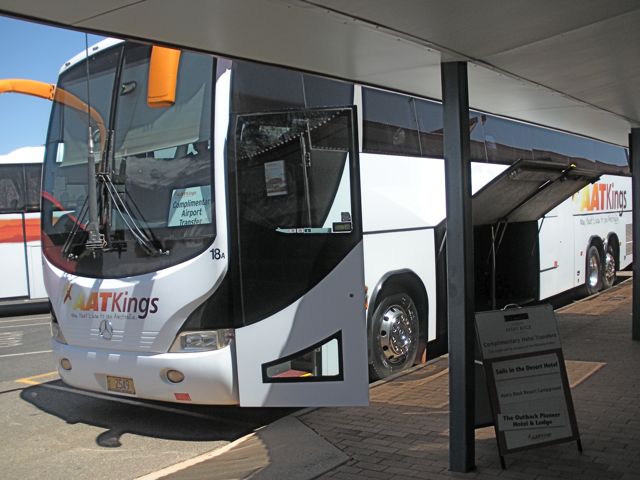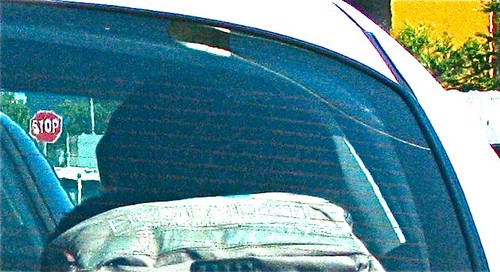
A report in last week’s paper:
A taxi driver signing off for the night was robbed at gunpoint in Lyneham on Tuesday night. The victim was in the car park of a unit complex on Goodchild Street about 10pm when he was bailed up by a man with a handgun wearing a black balaclava. The gunman demanded the taxi driver hand over his takings, and then fled into bushland. (Canberra Times, 12 Feb 2009)I’ve often dropped passengers off in this complex and noted that several cabs “live” there. The carpark is enclosed and not visible from the street, so my guess is that one of the residents noted the habits of the cabbie and either did the deed himself or told a mate. This is actually one of the things we’re warned about in taxi school. Don’t count your money in a secluded location, especially at night. All too often cabbies get into a predictable pattern and make themselves into targets.
Looking at my takings for that night, and it was a pretty good one for a Tuesday, well over half was through plastic cards or vouchers. I would have had maybe a hundred dollars in cash at that time of the night, and that’s including my float.
Very likely the gun was a fake. It is extremely rare for a gun to be used in a crime here, and when they are used, it’s for things like gangland murders or bank robberies. Far more common is for a passenger to pull a knife on a cabbie.
Even so, with the number of security cameras and devices in a cab nowadays, there’s going to be photographic evidence of a crime, and if it’s serious enough, the cops will track down the criminal.
I’ve occasionally felt uneasy about a passenger, but for the most part, people in Canberra are very good, and I’m far more likely to be swapping yarns with a late night passenger, or smiling as they sing along to Abba or play air guitar to Dire Straits.
I had a passenger pull a knife on me a few nights ago. He was canoodling with his girlfriend on the main rank in Civic, and when they eventually grew tired of this and wanted to get home, mine was the cab they jumped into.
He wanted to talk, and it was the usual opening step of “You must get some scary passengers.” He wanted to talk about the possibility of getting stabbed, but I deflected him onto the kangaroo track. Kangaroos scare me far more than passengers. His advice to me, based on sound physics, was to brake as hard as I could, and just before impact to accelerate suddenly, thereby raising the nose of the car and increasing the chance that the beast would go underneath, rather than over the bonnet and through the windscreen. Good advice if you’ve got several seconds to think about it, but in that time I can slow to a crawl and avoid hitting them entirely. The two times I’ve run into kangaroos, I’ve had maybe half a second to react, so I’ve never gotten past the stomp-on-the-brakes-as-hard-as-you-can part of the plan.
He was on something. Just a little bit odd in his manners. I didn’t think he was any danger, especially not with a young lady companion, so I was surprised when we pulled up at the destination and he produced a knife.
A sort of Swiss Army knife, except it had a box-cutter blade inside it, neatly folded up. He handed it to me and I took a look. I suppose the message was that he could have stuck it into my ribs.
Instead, he gave me a credit card for the $32 fare. Unfortunately, my card reader chose this moment to decide that it was out of radio range of the bank network, so the transaction was declined. He and his girlfriend scraped around and came up with twenty dollars, which was better than nothing.
The real danger to a cabbie in Canberra is runners. I’ve had a few, like maybe one every six months or so. Not a major threat to my income, and I make more in tips than I lose to runners, so I tend not to worry about them too much.
Still, it’s irritating when it happens. Not only do I lose my half of the fare, I’ve also got to take cash out of my own pocket to pay the owner’s half, meaning I’ve got to work another hour or so to make that money. So I usually end up having worked a couple of late night hours for no gain.
Worse is that the runners get rewarded for their actions and tend to become repeat offenders, ripping off cabbie after cabbie on a regular basis. For me, it’s no big deal, but for a cabbie depending on the long hours and poor income to support a family, it’s gotta hurt. And it’s always the long fares. Nobody ever runs on a ten dollar fare to the next suburb, but when it’s a forty or fifty dollar fare, and the passengers are young men trying to evade the security camera by sitting in the back seat, cabbie beware!
The excellent Sydney cabbie blogger Adrian Neylan made a
recent entry about a runner. He was able to find a police car, and policemen who gave a stuff, which is rare on both counts.
One cabbie advised me to keep the car in reverse gear when stopping, and if a passenger runs, hit the gas, knock him down with the open door and run over him with the front wheels. A little extreme for the crime, but I can understand why a cabbie might do such a thing.
My last runners were a group of three young men, about the same age as my teenage son. Would I run over my own son? No. So why would I run over anybody else’s son?
But I’m seriously thinking of installing a webcam in the cab, so I have footage I can put up on Facebook and YouTube. I reckon anyone scum enough to rob a cabbie is also going to have a fair number of enemies in regular life.
Better yet, the cabs in Melbourne all advertise that advance payment is required during late night hours. I consider it rude to ask for money up front, but I might start doing it for high-risk fares. The argument against is that restaurants don’t ask you to pay for a meal before consuming it, but my response is that the average cab is more the equivalent of Macdonalds than The Golden Fingerbowl, and you just try to get a Big Mac without reaching into your wallet.













